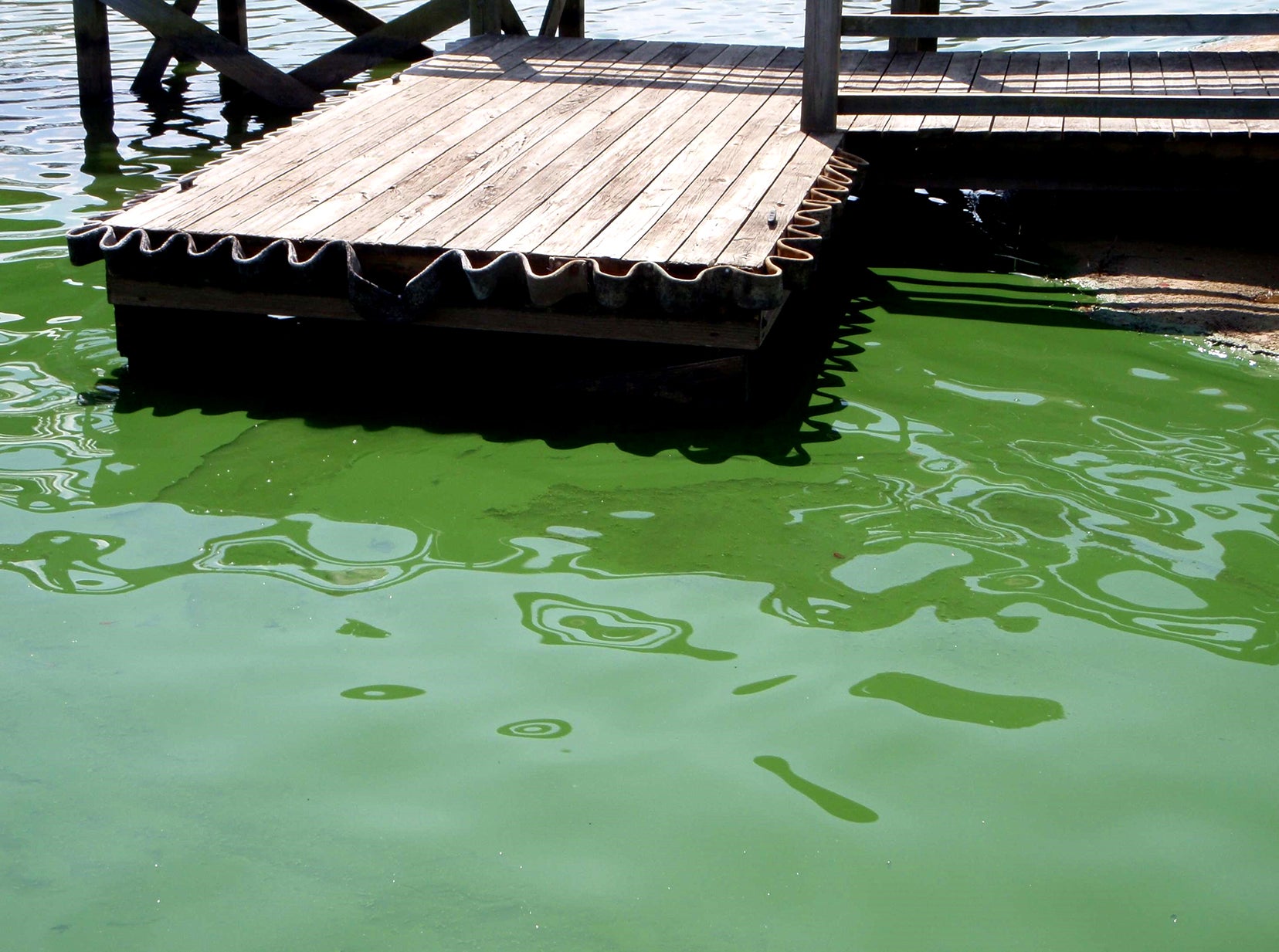Algal bloom in Chowan River
Published 5:55 pm Tuesday, August 3, 2021
|
Getting your Trinity Audio player ready...
|
A summertime tradition is back….and it’s not a pleasant one.
The N.C. Department of Environmental Quality, Division of Water Resources (DWR) advises the public to avoid contact with green or blue water in the Chowan River due to an algal bloom that has lingered in the area since July 27.
The bloom has been observed in the Colerain area as well as across the river near Edenton (from Arrowhead Beach to Rockyhock).
Algal blooms tend to move due to wind and wave action.

When favorable environmental conditions exist, algae can reproduce rapidly and form blooms that appear as surface scums, water discoloration, or both. Photo courtesy of NCDWR
DWR has investigated the bloom and determined it is dominated by Dolichospermum and Microcystis, which belong to the algal group cyanobacteria (also known as blue-green algae). Cyanobacteria blooms usually appear bright green but when a bloom starts to decay, the color can change to a milky blue. Decaying algae may produce a strong, foul odor that can impact a large area.
Both Dolichospermum and Microcystis can produce microcystin, an algal toxin that may cause adverse health effects in humans and pets. A quantitative test detected microcystin in this bloom at 350 μg/L which exceeds public health advisory levels. A final report will be uploaded to DWR’s Algal Bloom Dashboard as soon as possible.
North Carolina has had no reports of adverse health effects in people associated with this algal bloom.
N.C. Department of Health and Human Services, Division of Public Health (DPH) routinely encourages the public to avoid contact with large accumulations of algae and to prevent children and pets from swimming or ingesting water in an algal bloom.
DPH suggests the following steps to safeguard against algal blooms:
Keep children and pets away from water that appears bright green, blue, discolored, or scummy.
Do not handle or touch large mats of algae.
Avoid handling, cooking, or eating dead fish that may be present.
If you come into contact with an algal bloom, wash thoroughly.
Use clean water to rinse off pets that may have come into contact with an algal bloom.
If your child appears ill after being in waters containing an algal bloom, seek medical care immediately.
If your pet appears to stumble, stagger, or collapse after being in a pond, lake, or river, seek veterinary care immediately.
To report an algal bloom, contact the nearest DEQ regional office or submit a report online. To view reported algal bloom events, visit DWR’s Fish Kill & Algal Bloom Dashboard.
To learn more about algal blooms, visit the DWR website. For more information on the potential health effects from algal blooms, visit the DPH website.



